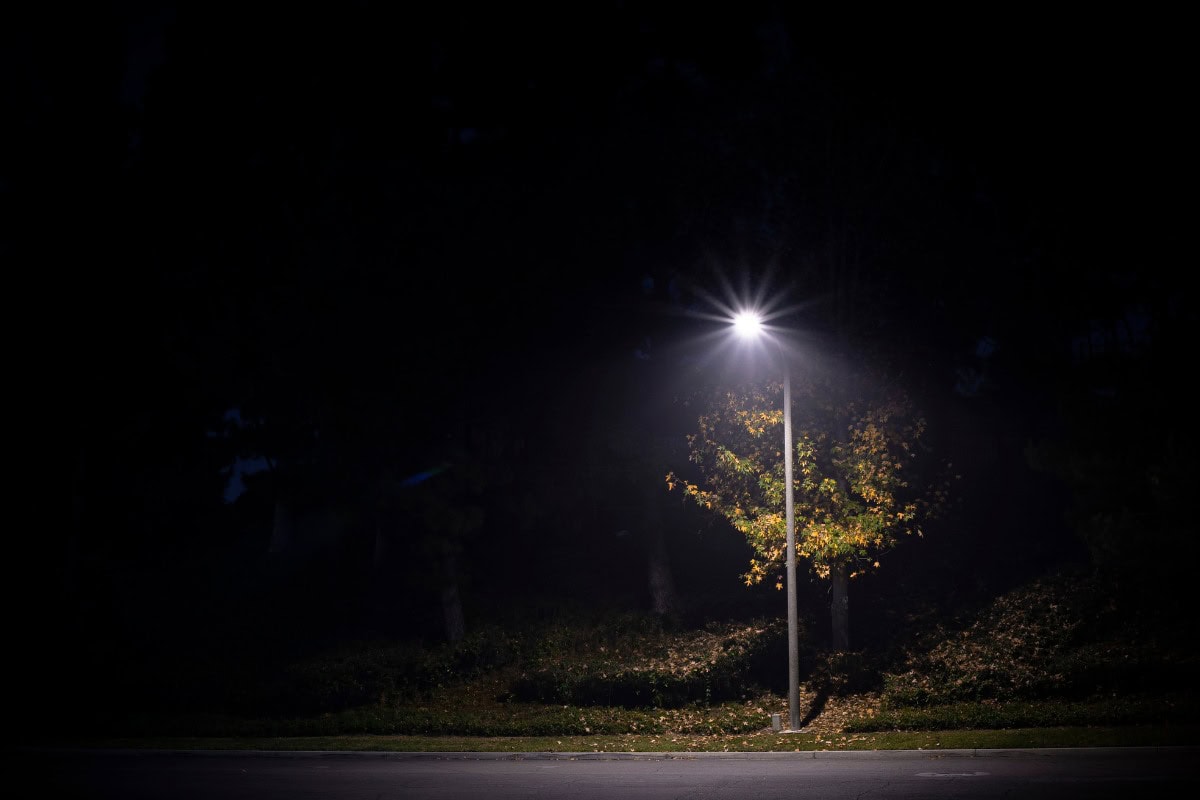What Is Cut-off Angle
The cut-off angle in lighting refers to the angle between the vertical axis (nadir) and the first line of sight at which the bare light source is no longer visible. In other words, it is the angle measured upwards from the point directly below the luminaire, beyond which the light source is completely shielded from view. The cut-off angle is a critical factor in determining the visual comfort and glare control of a lighting system.
It is important to note that the cut-off angle is often confused with the shielding angle, also known as the protection angle. While these two concepts are related, they serve different purposes in lighting design. The shielding angle complements the cut-off angle and protects the observer’s eyes from direct view of the light source. On the other hand, the cut-off angle focuses on controlling the overall light distribution and minimizing glare.
The significance of the cut-off angle lies in its ability to direct light where it is needed most while reducing unnecessary light spillage and glare. By carefully selecting luminaires with appropriate cut-off angles, lighting designers can create visually comfortable environments that enhance visibility, improve energy efficiency, and minimize the negative impacts of light pollution on the environment and human health.
Types of Cut-off Classifications
The Illuminating Engineering Society of North America (IESNA) has defined four main types of cut-off classifications for outdoor luminaires. These classifications are based on the specific angle restrictions and the percentage of lumens allowed above certain angles.
Full Cutoff
Full cutoff luminaires emit no light above the horizontal plane (90 degrees from nadir) and no more than 10% of the total lumens above 80 degrees from nadir. This means that the luminous intensity at or above the horizontal plane is zero, and the candela per 1000 lamp lumens does not exceed 100 at a vertical angle of 80 degrees. Full cutoff luminaires provide the highest level of glare control and are ideal for minimizing light pollution in sensitive environments.
Cutoff
Cutoff luminaires allow a small amount of light to be emitted above the horizontal plane, with no more than 2.5% of the total lumens above 90 degrees and no more than 10% above 80 degrees from nadir. The candela per 1000 lamp lumens does not exceed 25 at 90 degrees and 100 at 80 degrees. Cutoff luminaires offer good glare control while providing slightly more light distribution flexibility than full cutoff luminaires.
Semicutoff
Semicutoff luminaires emit more light above the horizontal plane, with no more than 5% of the total lumens above 90 degrees and no more than 20% above 80 degrees from nadir. The candela per 1000 lamp lumens does not exceed 50 at 90 degrees and 200 at 80 degrees. Semicutoff luminaires provide moderate glare control and are suitable for applications where a balance between light distribution and glare reduction is required.
Noncutoff
Noncutoff luminaires have no candela limitation in the zone above the maximum candela. This means that there is no restriction on the amount of light emitted above the horizontal plane. Noncutoff luminaires offer the least glare control and are typically used in applications where glare is not a primary concern, such as decorative lighting or high-mounting height installations.
Each cut-off classification has its own implications for light pollution and glare control. Full cutoff and cutoff luminaires are the most effective in reducing light pollution and minimizing glare, while semicutoff and noncutoff luminaires allow for more flexibility in light distribution at the expense of increased glare and light pollution potential.
Relationship Between Cut-off Angle and Other Lighting Angles
To fully understand the role of cut-off angle in lighting design, it is essential to explore its relationship with other key lighting angles, such as shielding angle and beam angle.
Cut-off Angle vs. Shielding Angle
The shielding angle, also known as the protection angle, is the angle formed between the horizontal plane and the line connecting the light-emitting part of the luminaire to the lower edge of the shielding grid. It measures the extent to which opaque material blocks the light emitted towards the observer’s eyes, reducing glare. The shielding angle and cut-off angle are complementary angles, with their sum equaling 90 degrees.
While the cut-off angle focuses on controlling the overall light distribution and minimizing glare, the shielding angle specifically addresses the protection of the observer’s eyes from direct view of the light source. In general, a larger shielding angle results in better glare control, but it also reduces the luminaire’s efficiency.
Cut-off Angle vs. Beam Angle
On the other hand, the beam angle refers to the angle between the two half-peak intensity points on either side of the beam axis. It measures the spread of the light beam emitted by a luminaire. Unlike the cut-off angle, which is concerned with the visibility of the light source itself, the beam angle focuses on the distribution of light on the target surface.
The beam angle and cut-off angle serve different purposes in lighting design. The beam angle determines the width and uniformity of the illuminated area, while the cut-off angle controls glare and light pollution. However, both angles are crucial in shaping the overall light distribution and achieving the desired lighting effects.
In real-world lighting scenarios, the interaction between cut-off angle, shielding angle, and beam angle can have a significant impact on the overall lighting quality and visual comfort. For instance, in a high-ceiling office space, luminaires with a narrow beam angle and a high cut-off angle can provide focused illumination on work surfaces while minimizing glare for occupants. In contrast, a wide-beam luminaire with a lower cut-off angle may be more suitable for general ambient lighting in a residential living room, creating a softer and more inviting atmosphere.
Applications of Cut-off Angle
The cut-off angle plays a crucial role in various lighting applications, both indoors and outdoors:
Outdoor Lighting
In outdoor lighting, the cut-off angle is particularly important for controlling light pollution, minimizing glare, and ensuring public safety. Street lighting and pedestrian walkways benefit from luminaires with full cutoff or cutoff distributions, which direct light downward and reduce unnecessary light spillage into the night sky. This not only improves visibility for drivers and pedestrians but also helps preserve the natural darkness and minimize the impact on nocturnal wildlife.
Parking lot illumination is another area where the cut-off angle plays a significant role. Using luminaires with appropriate cut-off angles, lighting designers can provide uniform illumination across the parking area while minimizing glare for drivers and pedestrians. This enhances safety, security, and overall visual comfort.
In architectural and landscape lighting, the cut-off angle can be used to highlight specific features, create visual interest, and minimize light trespass onto adjacent properties. Luminaires with adjustable cut-off angles or specialized optics can be employed to precisely control the light distribution and achieve the desired aesthetic effects.
Indoor Lighting
The cut-off angle is essential for creating visually comfortable and productive environments in indoor lighting applications. In offices and workspaces, luminaires with high cut-off angles can help reduce glare on computer screens and work surfaces, minimizing eye strain and improving overall visual comfort for employees. This can lead to increased productivity and well-being in the workplace.
Retail lighting is another area where the cut-off angle can be used to enhance the visual appeal of products and create a more engaging shopping experience. By selecting luminaires with the appropriate cut-off angles and beam spreads, lighting designers can highlight specific merchandise, create focal points, and guide customers through the store.
In residential lighting, the cut-off angle can be used to create a warm and inviting atmosphere while minimizing glare and ensuring visual comfort. Luminaires with adjustable cut-off angles or diffusing elements can provide flexible lighting options for various tasks and moods.
Specialized Applications
The cut-off angle also plays a crucial role in specialized lighting applications. In sports facilities, luminaires with precise cut-off angles can provide uniform illumination on the playing field while minimizing glare for athletes and spectators. This ensures optimal visibility and enhances the overall experience for everyone involved.
In security lighting, the cut-off angle is important for directing light where it is needed most, such as building entrances, perimeters, and potential areas of concern. Security personnel can maintain good visibility while minimizing light trespass and glare by using luminaires with the appropriate cut-off angles.
In museum and art gallery lighting, the cut-off angle is crucial for highlighting exhibits and creating the desired ambiance without causing damage to sensitive artworks. Luminaires with precise cut-off angles and specialized optics can be used to provide controlled illumination, minimize glare, and protect delicate materials from excessive light exposure.
Importance in Lighting Design
The cut-off angle is a fundamental consideration in lighting design, as it directly impacts several key aspects of lighting quality and performance. By selecting luminaires with the appropriate cut-off angles, lighting designers can:
- Reduce glare and improve visual comfort for occupants, ensuring a more pleasant and productive environment.
- Enhance energy efficiency by directing light where it is needed most and minimizing waste.
- Comply with lighting regulations and standards, such as those set by the Illuminating Engineering Society (IES) and the International Dark-Sky Association (IDA).
- Minimize the environmental impact of lighting by reducing light pollution, preserving natural darkness, and protecting nocturnal wildlife.
For example, the retrofit of street lighting in a residential neighborhood with full cutoff luminaires resulted in a significant reduction in light pollution, improved visual comfort for residents, and energy savings of up to 50%.
Measuring and Calculating Cut-off Angle
Lighting professionals use various tools and techniques to determine the cut-off angle of a luminaire and verify its compliance with industry standards.
Measurement Techniques
One of the most common methods for measuring cut-off angles is using a goniophotometer. This specialized equipment precisely measures luminous intensity distribution in vertical and horizontal planes. By analyzing the photometric data obtained from a goniophotometer, lighting professionals can determine the cut-off angle of a luminaire and assess its performance.
In some cases, visual inspection methods can also be used to approximate the cut-off angle. This involves observing the luminaire from various angles and identifying the point at which the light source becomes visible. While this method is less precise than goniophotometric measurements, it can provide a quick and practical assessment of the cut-off angle.
Calculation Methods
The cut-off angle of a luminaire can also be calculated using mathematical formulas based on the luminaire’s geometry and photometric data. The most common formula for calculating the cut-off angle is:
Cut-off angle = arctan(h/d)
Where:
- h is the height of the luminaire above the observer’s eye level
- d is the horizontal distance between the luminaire and the observer
This formula assumes that the luminaire is a point source and does not account for the size or shape of the luminous area. In practice, more complex calculations may be required to accurately determine the cut-off angle, considering factors such as the luminaire’s dimensions, light distribution, and reflector or lens characteristics.
Factors Affecting Cut-off Angle
Several factors can influence the cut-off angle of a luminaire, including:
Luminaire Shape and Design
The physical structure of the luminaire, including its housing, reflectors, and lenses, plays a significant role in determining the cut-off angle. Luminaires with deep, parabolic reflectors or precise optical control tend to have higher cut-off angles compared to those with shallow or diffuse reflectors.
Light Source Type and Position
The type of light source used in the luminaire and its position relative to the optical system can affect the cut-off angle. For example, LED luminaires with precisely controlled optics can achieve higher cut-off angles compared to traditional light sources such as metal halide or high-pressure sodium lamps.
Reflector or Lens Characteristics
The material, shape, and surface finish of the reflectors or lenses used in the luminaire can influence the cut-off angle. Specular reflectors with high reflectance and precise curvatures can help achieve higher cut-off angles, while diffuse reflectors or lenses may result in lower cut-off angles.
Standards and Guidelines
Industry standards and guidelines are crucial in ensuring consistent and reliable measurement of cut-off angles. The Illuminating Engineering Society of North America (IESNA) has established standards for cut-off angle measurement, which are widely used in the lighting industry.
These standards define the specific procedures and equipment required for accurate measurement, as well as the criteria for classifying luminaires into different cut-off categories (full cutoff, cutoff, semi-cutoff, and non-cutoff). Lighting professionals rely on these standards when specifying luminaires and verifying their performance.









